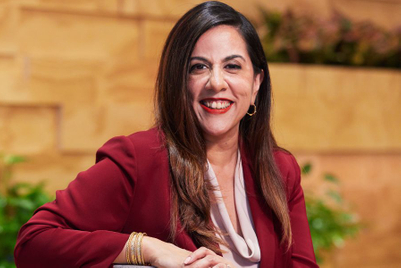Day two of Ad:tech 2024 saw an engaging session around the burgeoning creator-led economy and the influencer marketing which is increasingly marking its space in brand’s media mix today. You can read all about
day one here.
The panelists included marketers from diverse product categories and industries such as FMCG, Finance and AlcoBev and comprised Ankit Desai, head of media, digital marketing and brand PR, Marico, Vishal Gaba, former associate director for marketing, Bira and Megha Manchanda, senior vice president and head of marketing at DBS Bank.
Hari Krishnan, managing director, content & groupé marcomm, Publicis Groupé India moderated the session.
The discussion centred around 'secrets of successful brand and creator economy collaborations', and spotlighted the evolution of the influencer space, with brands now collaborating with different cohorts of macro and micro influencers simultaneously. The panel endeavoured to uncover strategies for driving efficiency in this ever-evolving landscape, even as it redefines the way brands influence and sell.
The evolution
Krishnan highlighted how the influencer space has grown dramatically in the last only three to five years, to the extent that the Prime Minister himself has recognised and felicitated influencers in the country (and some outside) through the recently held national creators economy. He underlined how this was a clear indicator of the potency of the medium, and a reason enough as to why the cohort must not be taken lightly, especially in the wake of the upcoming general elections in the country.
Krishnan kicked off the session by asking the marketers to share their experiences with the influencer medium in the past four years—from when it began exerting its influence on the markets to its evolution today as part of several brands’ marketing media mix.
Gaba admitted that initially at Bira they started off with skepticism regarding the emerging creator medium as a marketing mix, only wanting to experiment with the medium to get a feel of its clout to influence its consumers, however with ‘zero measurement’ angle and only focus on their following.
“And today it has evolved into an extremely well-established vertical in every marketing team, in terms of working with creators and understanding how the brand can be a part of the creator universe, while also looking at specific measurements, whatever it may be. So that change has happened and happened really fast,” stated Gaba.
Ankit Desai of Marico agreed on the growing role of influencer marketing in brands’ media mix.
“Despite being a ‘recent phenomena’, the influencer platform has over time become a systemic input into the brand’s strategic planning,” he said. "The platform has progressed from being almost an afterthought to something that needs to be planned right from the outset of a brand’s strategic mix and monitored through the year," he added.
Diverse roles creators play
The panel discussed the differing roles and usage that creators and influencers can play for different business categories.
Manchanda spoke from the perspective of BFSI as a critical category for the creator-led economy. “When we run a campaign, we look at influencers as a medium of sending out the right message.
Especially for a BFSI brand sometimes you have an extremely complex message to give, unlike other verticals. So for us, an influencer works to take the message to the right audience in a very relevant fashion. It’s a media channel.”
Manchanda shared how influencers in the financial space—referred to as ‘finfluencers’—can demystify complex, jargonised conversations for their followers who may be more receptive to them, as a result of which the message that the brand wishes to convey is received in a far more ‘organic’ manner. Which otherwise may not always be the case for a finance brand campaign, she pointed out.
Krishnan touched upon the subject of influencers not coming under the purview of regulations, especially when it came to a category like alcobev, which is otherwise a much regulated category when it came to advertising.
“Even if the influencer is not under any regulations it is the brand’s responsibility to ensure that they do not engage in practices that can backfire for either- the brand or the influencer.”
Gaba also spoke about the importance of building a community of brand loyalists via influencers, “This may not see immediate results and for a category like Alcobev it may take from six to twelve months before we get to see a domino effect, leading to a boost in loyal followers of the brand onboard and consequently a spike in business.”
“If as a team you think it’s going to add value then you need to get into it, and invest in it for the long-term. It's important to stay the course, and not just do a few experiments and move on," stated Gaba.
“We have also started to reach a point where ‘resonance’ and ‘relevance’ have taken a front seat, as that’s where we get a community reach,” he added.
Coming to a category like FMCG and CPG, Marico’s Desai shared that for a broad spectrum category like thiers it was important to first understand the goal of a particular content they wish to have from an influencer and then accordingly craft the content creator into the mix. It could range anywhere from building awareness about a new product launch or creating resonance or relevance consideration for another, he added.
Krishnan summed up the different roles creators and influencers can exert in diverse categories. “Education in a complex category like finance, community-building in a category where one needs to get together with like-minded people to vibe with a brand or simply to build brand salience for a mass-user base brand like FMCG.”
Inherent risks with lack of control?
The conversation steered to the aspects of creator-led content which bordered on unpredictable or uncontrollable, which can pose an inherent risk to brands and their associated image.
“Activating creator economy is a bit like a loose canon, which can sometimes go out of control for brands,” opined Pillai. The panel highlighted mechanisms deployed by brands to ensure lessened risk.
Especially for categories like finance, where the risks are heightened with a higher impact of ‘finfluencer’ content on followers’ investments with also regulatory restrictions mandating stricter norms, Manchanda shared that ‘transparency’ is the key. When it came to finfluencer content, the script is closely screened for any discrepancies and to check whether it followed all compliances strictly.
“One thing that’s clear is that there’s always an inherent risk,” opined Gaba. “Because while you can control the content that you partner with the influencer for, there will be content that is beyond your control before and after the partnership, which can affect the brand image, “he added.
The solution, Gaba shared, is to stick with tried and tested influencers who have been around sharing content on a particular category, whose content is validated to be authentic, apart from having checks and balances in place when it comes to the script.
For large FMCG brands, Desai shared that there is always a risk of losing control especially when it comes to micro and nano influencers. “We promote influencers who we have absolute confidence about. So the mega influencers are the ones who can amplify your reach to the required TG and bring some amount of business. They are our tent-pole content creators and they ensure us a certain amount of control.” But one must bear in mind that while these platforms can be the dessert, you have to earn your own lunch, he quipped.




.jpg&h=334&w=500&q=100&v=20250320&c=1)



.png&h=334&w=500&q=100&v=20250320&c=1)

.png&h=334&w=500&q=100&v=20250320&c=1)

.png&h=334&w=500&q=100&v=20250320&c=1)





.jpg&h=268&w=401&q=100&v=20250320&c=1)
.png&h=268&w=401&q=100&v=20250320&c=1)

